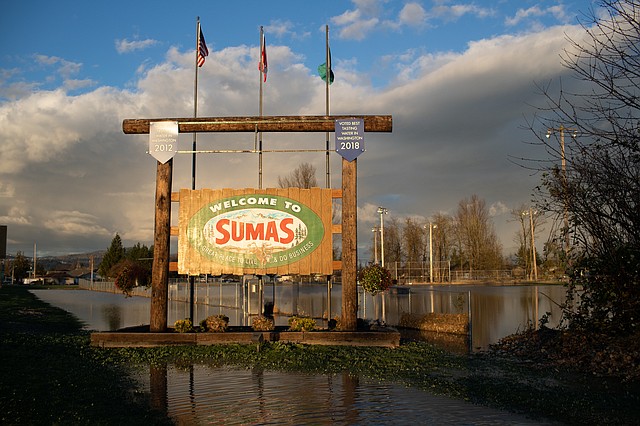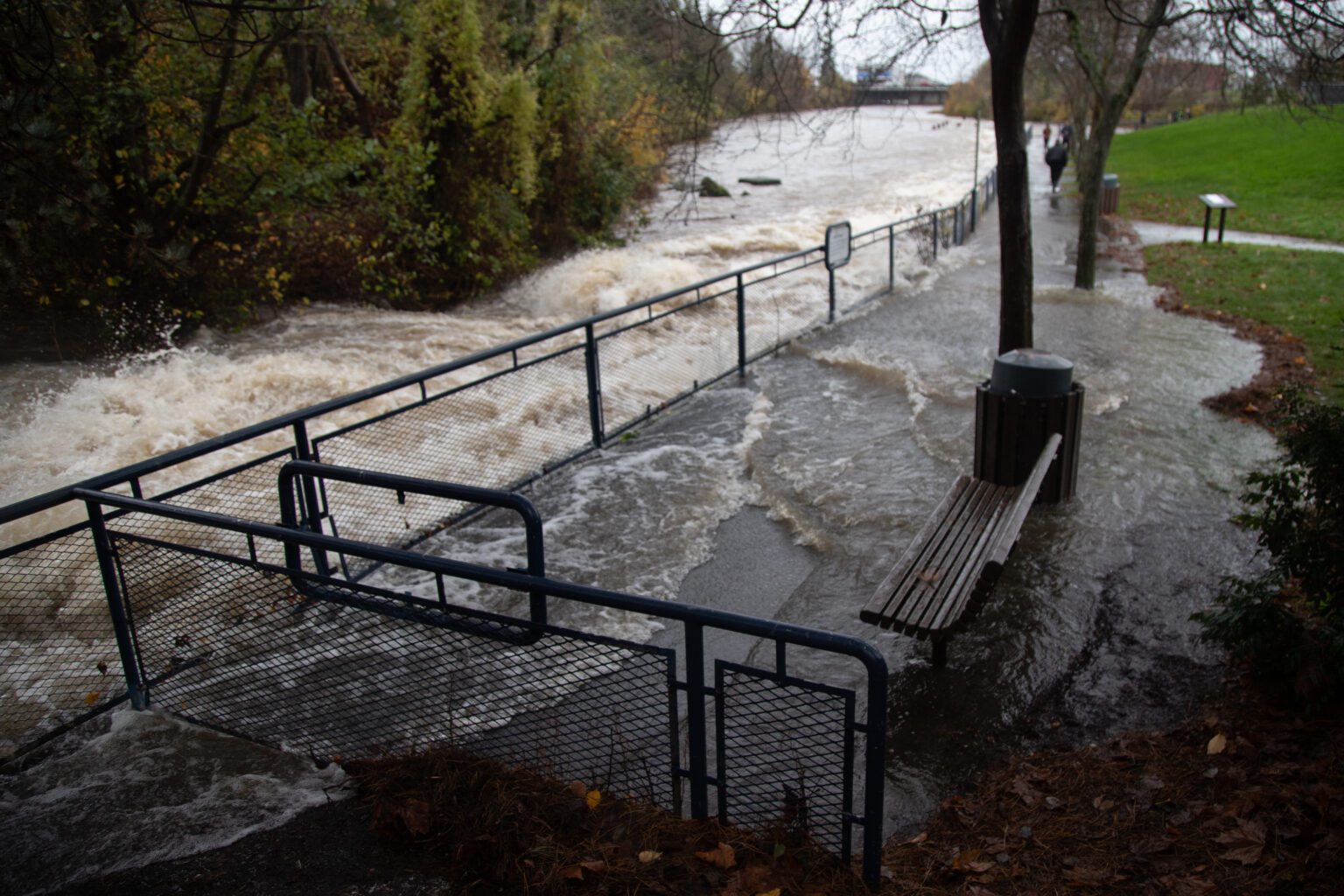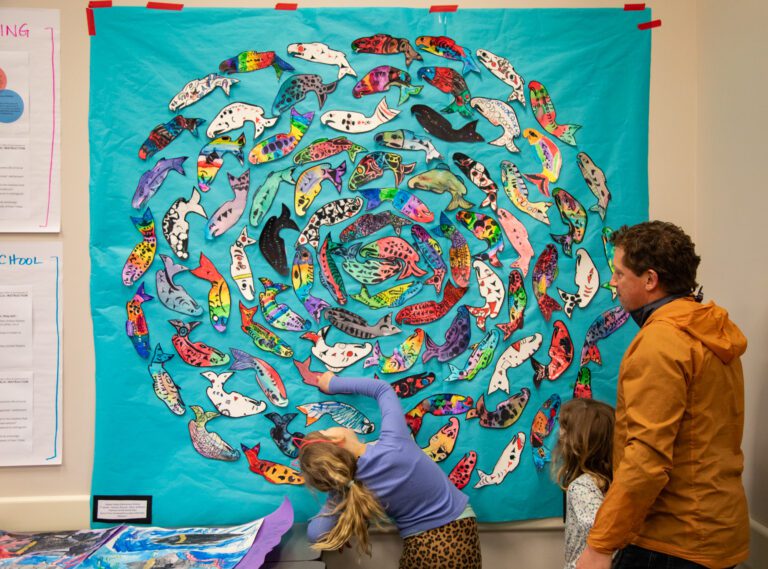Climate change is easy to see, if you look in the right places.
Glaciers and the ice around the North Pole have shrunk dramatically in recent decades, and temperatures around the globe are rising.
But what about Whatcom County? Local and state officials quickly concluded that June’s record-breaking heatwave and the unprecedented flooding in November were the direct results of climate change.
Gov. Jay Inslee, who has built his political identity around fighting climate change, had this to say about the heatwave on June 28, 2021: “What I have been warning about has now come to pass, and it is very heart-rending to see these changes happen to our state.”
That day was the hottest ever recorded in the Puget Sound region, with a temp of 108 at Sea-Tac and an all-time high of 99 in Bellingham. (The official weather station at Bellingham International Airport would hit 100 degrees less than two months later.)
When a series of atmospheric rivers and subsequent flooding overwhelmed Whatcom and southwest British Columbia in November, Inslee told reporters in flood-damaged towns that we were experiencing “a permanent state of attack by the forces of climate change.”
The governor’s statements have significant implications for the county’s future, given the major impacts from heat and flooding. Inslee and climate scientists both say to expect more of the same and worse, in the decades to come.
The June heat “literally fried” about 30% of the county’s raspberry crop just as it was ready for harvest, said Henry Bierlink, executive director of the Washington Red Raspberry Commission.
More heatwaves like that would require Whatcom raspberry farmers to adapt. Heat-resistant varieties are in development, or farmers could switch crops entirely, Bierlink said, adding, “I think we’re a long way away from that.”
The impacts of the November floods were felt even more broadly and deeply. Nearly 2,000 homes were damaged, and the total cost estimate from flood damage has risen to $150 million, including homes, farms, roads and businesses.
 An atmospheric river brought flooding in November 2021 that damaged about 80% of the homes in Sumas. (Hailey Hoffman)
An atmospheric river brought flooding in November 2021 that damaged about 80% of the homes in Sumas. (Hailey Hoffman)
“We cannot sustain those kinds of costs and damages,” John Gargett, deputy director of the county’s Division of Emergency Management, told the Whatcom County Council on Feb. 22.
Gargett had no doubt what caused the extreme and harmful weather the community saw in 2021.
“As a county, we need to recognize that we are in fact fighting the climate impacts at this point,” Gargett told the council. “It is not something theoretical. We don’t need to study it in the context of climate change impacts in the future. It’s already here.”
County leaders agree. Less than a week before the floods, the council approved a climate action plan that outlines steps the county can take to counteract climate change. The county and Bellingham have both been updating separate climate action plans since 2007.
The message from politicians is clear: Whatcom County saw two dramatic examples of climate change in action last year.
But what do scientists say about the June heatwave and the November floods?
Getting down to the science
Generally, it’s hard to link extreme weather events — or any weather event — to the climate. It would be like looking at a forest and trying to draw a conclusion about a single tree.
Big-picture changes can be obvious. Look at a time lapse of the Arctic ice sheet or before-and-after photos of an Alaskan glacier, and it’s easy to see they are receding. Scientists with the Intergovernmental Panel on Climate Change (IPCC) are at least 90% certain that humans emitting greenhouse gases are responsible for the disappearing ice.
IPCC scientists are less confident about whether human actions are to blame for the increasing frequency of extreme high temperatures and heatwaves in western North America; they assign a “medium confidence” to this connection. Drill down even further, to try to figure out whether a single heatwave in western Washington was due to climate change, and the science becomes more challenging still.
The first thing to know about the June 2021 heat is it was extremely rare, even when you factor in climate change. Cliff Mass, a popular and sometimes controversial weather blogger and a professor of atmospheric sciences at the University of Washington, suggested just how rare by calling the heatwave a “black swan” in a blog post. Several weather ingredients came together just right to bring temperatures to unprecedented highs, he noted.
Mass minimized climate change’s role, saying it “added a few degrees to an already extreme event.”
Meanwhile, an international group of scientists, led by Sjoukje Philip and Sarah Kew at the Royal Netherlands Meteorological Institute, wrote a scholarly article posted online in November, claiming a link between the Puget Sound heatwave and climate change. The final version of the report is still under peer review.
Using computer models, the researchers found that the heatwave was a one-in-1,000-year event with global warming. If humans had never warmed the planet by emitting the likes of carbon dioxide and methane, the temperatures seen in June would have been 150 times less likely — in other words, virtually impossible.
The group also set the computer models to a 2-degrees-Celsius temperature increase — a milestone we could reach by mid-century. The study claims that a heatwave like the one the county experienced last summer would no longer be a one-in-1,000 in that case. Instead, it would come around every five or 10 years.
While the long-term outlook is grim, state climatologist Nick Bond put the results of this study into perspective.
“It’s not a new normal,” Bond said. “That’s something to emphasize. It’ll be highly unlikely to get anything like that again, any time soon.”
A connection between global warming and heatwaves carries a certain amount of common sense with it. How climate change might supercharge an atmospheric river is less obvious — but there is a common-sense way to think about it.
People know that cold air is drier than warm air, if only because they find themselves reaching for the lip balm more often in winter. Simply put, warmer air holds more water than cooler air. It stands to reason that as the atmosphere warms it will hold even more water, which eventually comes down as even heavier rain.
Scientists study the flood
Many factors having nothing to do with climate change aligned just right to turn a mundane atmospheric river on Nov. 14, 2021, into a record-breaker. Atmospheric rivers, so named because they transport on average twice as much water as the Amazon River, are categorized much like hurricanes. The November atmospheric river was a Category 3 storm, a middle-of-the-road status between “beneficial” and “hazardous.”
What tipped this storm into “hazardous” territory, especially in Canada, was the unusual direction it took. Rather than following the normal southwesterly track for an atmospheric river, it came more from the west and lined up squarely with the Fraser River Valley. This allowed it to penetrate farther inland and rain over a wider area.
Second, an unusually deep snowpack (definitely not brought on by climate change) contributed a large amount of melt to the stream flows. Also, the ground was already well soaked by a smaller atmospheric river that had preceded this one, leaving the soil unable to absorb much of the rain.
Nathan Gillett at Environment and Climate Change Canada and others just finished a study comparing two sets of computer simulations of the storm — one with today’s climate and one “pre-industrial” scenario in which human-caused warming never happened. They concluded flooding at the level seen in the storm was two to four times more likely with climate change than without.
The Canadian study hasn’t gone through peer review yet, and Mass at the University of Washington is skeptical of its conclusions. He said in an email to Cascadia Daily News that none of the key measures associated with atmospheric rivers — the amount of water they carry, the amount of rain they drop, or even the amount of flooding — have trended upward over the past several decades.
“Climate change cannot be the explanation if there is no trend in extreme precipitation, in (water transport), or in peak river flows,” Mass said.
The history of flooding in the Fraser Valley bears this out. As devastating as the November flood was, causing the worst natural disaster in British Columbia history in terms of dollars, the Vancouver Sun reported an 1894 flood was even bigger.
Climate scientists like Bond and Guillaume Mauger of the University of Washington Climate Impacts Group agree with Mass that some of climate change’s fingerprints haven’t shown up by a lot of measures, including rainfall intensity.
“It’s true that the trends that we see in the observations are not significant and not even systematically increasing,” Mauger said in an email. “But that doesn’t mean there isn’t a climate change trend embedded in there. Instead, it means that we can’t discern a trend from the ‘noise.’”
While some evidence of climate change has yet to reveal itself, one thing is likely: If we wait long enough, these effects will emerge from the background noise. Scientists say the global temperature will continue to rise, even if we drastically curtail our carbon output.
Mass, who has been characterized by critics as a climate-change denier because he so often uses his blog to poke holes in other scientists’ arguments (and media coverage of same), has shown in published research that atmospheric rivers along the west coast of the U.S. will be wetter by the end of the century because of climate change.
Mauger said he was willing to set aside the question of a link between climate and Whatcom’s extreme 2021 weather as beside the point.
“Regardless of the causes behind these specific events,” he said, “they show us what we can expect in the future.”
Reporter Ralph Schwartz took classes taught by Cliff Mass and Nick Bond in the 1990s as a graduate student in atmospheric sciences at the University of Washington.




